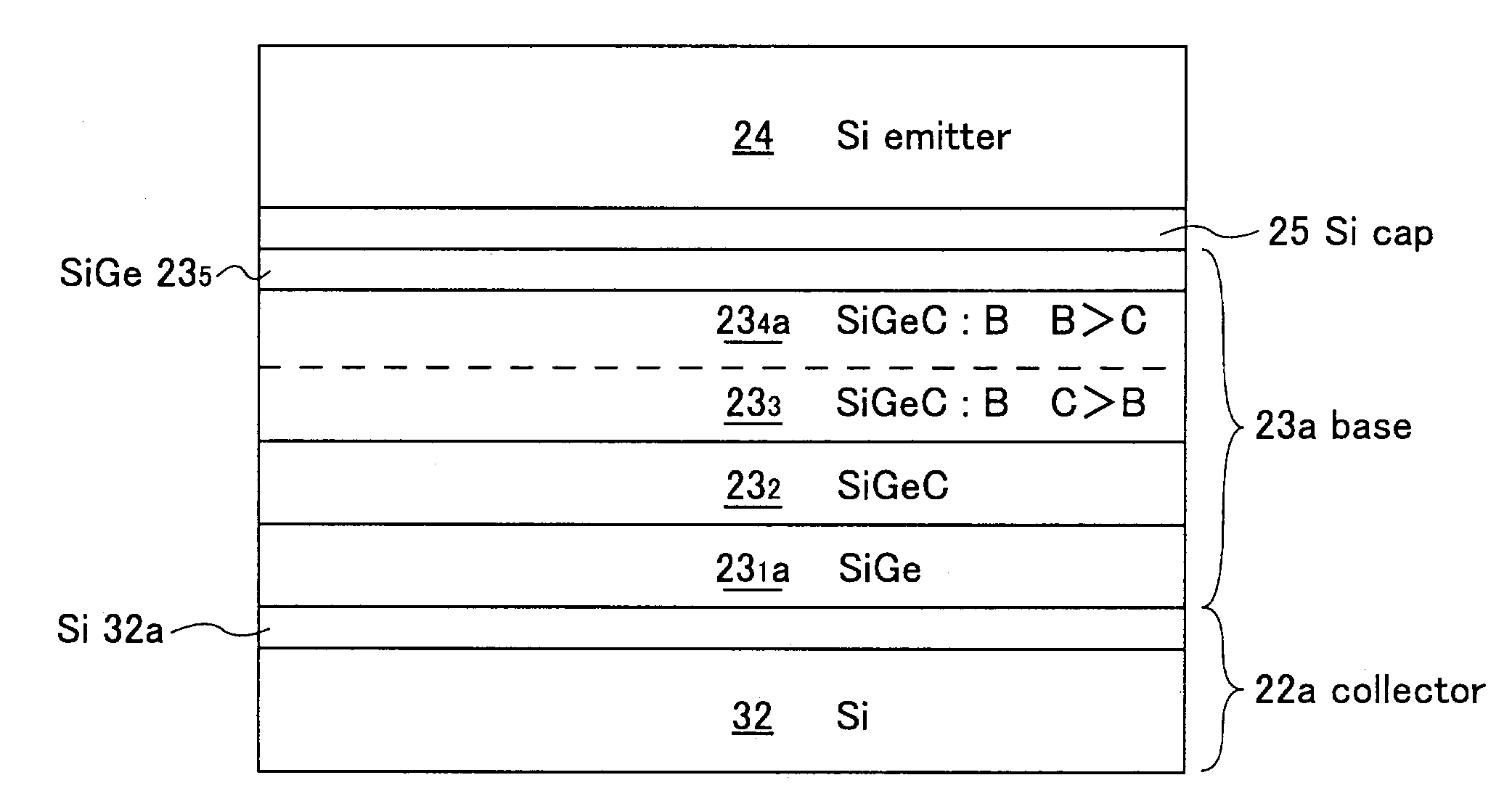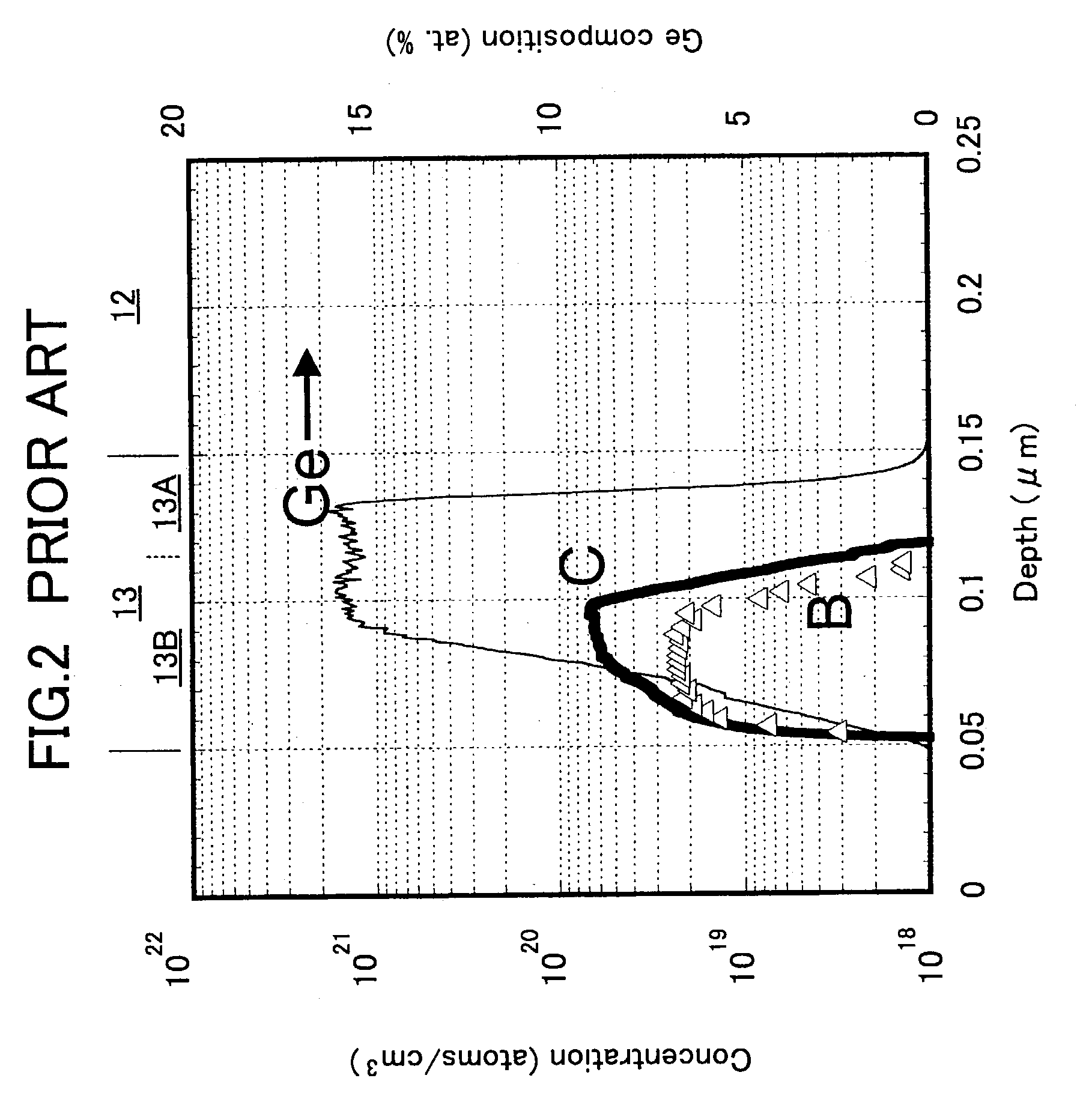Heterobipolar transistor and method of fabricating the same
- Summary
- Abstract
- Description
- Claims
- Application Information
AI Technical Summary
Benefits of technology
Problems solved by technology
Method used
Image
Examples
first embodiment
[0053]In the following, the heterobipolar transistor according to the first embodiment of the present invention is described.
[0054]FIG. 4 shows the structure of the vapor deposition apparatus 100 used in the present invention.
[0055]In FIG. 4, the vapor deposition apparatus 100 includes a quartz reactor 101 having a graphite susceptor 102 that can rotate freely, and a processing substrate 103 such as a Si (silicon) wafer, which is to be processed in the above apparatus, is placed on the graphite susceptor 102. In this drawing, the graphite susceptor 102 is covered by a SiC film, not shown in the drawing.
[0056]The quartz reactor 101 is connected, via a flange 101A, to a wafer enter / exit part 104, having a gate valve 104A and a load lock chamber 104B, and air is evacuated from the quartz reactor 101 via an evacuation port 104a, which is implemented in the wafer enter / exit part 104. Also, air is evacuated from the load lock chamber 104B via another evacuation port 104b. Additionally, va...
second embodiment
[0080]Next, the configuration and fabrication method of an npn-type heterobipolar transistor according to a second embodiment of the present invention is described.
[0081]FIGS. 9A–9C, 10A–10C, and 11A–11C show the fabrication process of the heterobipolar transistor according to the second embodiment.
[0082]With reference to FIG. 9A, an n-type impurity, for example, P (phosphorous) at a dose of 1×1014 cm−2 and at acceleration energy 300 keV is ion-implanted to the surface of a p-type Si (silicon) substrate31 to form a n+ dispersion region 32. This n+ dispersion region 32 functions as the collector of the heterobipolar transistor.
[0083]Subsequently, an isolation insulating film 33 is formed on an isolation region of the Si substrate 31 using the LOCOS technique and the like. Then, a SiO2 film 35 is formed on the exposed surface of the substrate 31 at a film thickness of 30–100 nm using the CVD technique, and after forming a polysilicon film 36 onto this surface and the insulating film 3...
third embodiment
[0096]In the following, the structure and fabrication method of a heterobipolar transistor according to a third embodiment of the present invention are described with reference to FIGS. 13 through 20.
[0097]FIG. 13 is a cross sectional view of the heterobipolar transistor according to the above embodiment. Features / components of the configuration and fabrication method of the heterobipolar transistor of this embodiment that are identical to those of the first and second embodiment described in FIGS. 1 through 12 are given the same numerical references and their descriptions are either simplified or omitted.
[0098]With reference to FIG. 13, the structure of the heterobipolar transistor according to the present embodiment is described in the following.
[0099]As shown, on the p-type Si substrate 31, the n+ well, namely, the n+ type dispersion region 32 is formed. The n+ type dispersion region 32 constitutes a part of a collector layer 22a.
[0100]In the isolation region of the Si substrate...
PUM
 Login to View More
Login to View More Abstract
Description
Claims
Application Information
 Login to View More
Login to View More - R&D
- Intellectual Property
- Life Sciences
- Materials
- Tech Scout
- Unparalleled Data Quality
- Higher Quality Content
- 60% Fewer Hallucinations
Browse by: Latest US Patents, China's latest patents, Technical Efficacy Thesaurus, Application Domain, Technology Topic, Popular Technical Reports.
© 2025 PatSnap. All rights reserved.Legal|Privacy policy|Modern Slavery Act Transparency Statement|Sitemap|About US| Contact US: help@patsnap.com



